Kelpie – Supernatural Horse-Liked Creature Lures Humans To Death In Scottish Lore
A. Sutherland - AncientPages.com - A water-horse spirit of Scottish folklore is a kelpie.
In Scottish folklore, this supernatural horse-shaped creature lures humans into riding it. This behavior proves fatally dangerous for its human rider because Kelpie suddenly carries the rider into a river or lake, plunges into the waters, and perishes.
Credit: Adobe Stock - Pol Solé
Despite being associated with the fairies' realm, they were less frightening than other beings from their magnificent fairyland. Kelpie has always been linked to the fairies, not necessarily under the direct command of the fairy folk, mainly due to its otherworldly nature.
The Scottish Kelpie, inhabiting running water, was a shapeshifter. According to lore, it usually appeared in the shape of a beautiful, powerful, black horse or pony walking alone on the shore.
Occasionally, it could assume the form of a shaggy-looking man. One of the Kelpie's common characteristics is that its hooves are backward compared to an average horse.
However, the Scottish Kelpie has always been terrifying and extremely dangerous to humans, no matter their appearance. The creature's goal is only one - preying on any humans it encounters.
As a peacefully grazing horse, Kelpie, also known as "a demon in the shape of a horse," could easily lure wandering travelers to mount them. Then, nothing could change the fate of Kelpie's victim.
More scary stories say the kelpies disappear in the water, where they eat their victim, especially his liver. Their other way to reach a human body was to jump on a lonely rider driving his horse mad and thus endangering the rider, crushing his body in their mighty grasp and even tearing people into pieces and eating them.
Also, malevolent kelpies could have endangered boats, and only careful and experienced skippers could force the Kelpie away from the vessel. The kelpies could effectively frighten travelers. In disguise as a horse, a kelpie sometimes had a magic bridle. Based on lore, anyone, who forced a kelpie to do something against its will, takes a terrible risk of being cursed by it and meeting with misfortune in the future.
Theoretically, it is believed that the kelpies can be commanded and controlled, but first, the Kelpie must be captured, which can only be done but capturing its bridle. The Kelpie's Achilles heel is its bridle.
There is also the belief it is possible to capture and tame a kelpie by getting a bridle over its head; however, this is a dangerous and challenging task as the Kelpie is physically strong and has a singularly rebellious nature. If a kelpie is bridled, it will serve its new master well and make for a good and versatile horse.
Kelpies are not normal horses; they are spirits, and thus, they can perform many magical functions.
As we have seen, the typical form taken by a Kelpie is equine (adult or pony horse), and the hint that can help unquestionably identify the creature's identity may be its mane and tail that never stop dripping, even on a dry day.
This magical creature can still surprise us because it can also take a form of a gorgeous woman dressed in green.
In one terrifying Scottish legend called "The Hour is come but not the Man," a kelpie took the form of a female nymph in the River Conan in Ross-shire.
A group of farmers working in a nearby field witnessed the water spirit as it called out, "The hour is come but not the man," and then plunged into the waters.
Just then, a rider on a horse dashed up to the false ford as though to dive in after the Kelpie, but the reapers immediately intervened, stopped the horse, and dragged the man, kicking and screaming, into a nearby church. They told him they would keep him locked there for an hour—the "Ill Hour," they called it, as the Kelpie was trying to work evil for that period. When the hour was up, the reapers returned to the church and found their man dead. He had fallen into a stone ditch of water and drowned himself.
Written by – A. Sutherland - AncientPages.com Senior Staff Writer
Updated on March 13, 2023
Copyright © AncientPages.com All rights reserved. This material may not be published, broadcast, rewritten or redistributed in whole or part without the express written permission of AncientPages.com
Expand for referencesReferences:
Briggs, Katherine. An Encyclopedia of Fairies: Hobgoblins,
Brownies, Bogies, and Other Supernatural Creatures. New
York: Pantheon Books, 1976
Keightley T. The World Guide to Gnomes, Fairies, Elves and Other Little People
McCoy Edain, A Witch's Guide to Faery Folk
Bane, T. Encyclopedia of Beasts and Monsters in Myth, Legend, and Folklore.
More From Ancient Pages
-
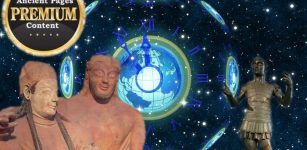 Did Etruscans Solve The Mystery Of Synchronicity And The Secret Language Of The Stars?
Civilizations | Jul 5, 2018
Did Etruscans Solve The Mystery Of Synchronicity And The Secret Language Of The Stars?
Civilizations | Jul 5, 2018 -
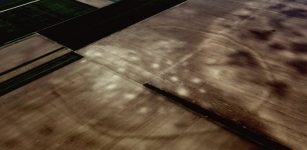 Vast Network Of Previously Unknown European Bronze Age Megastructures Discovered
Archaeology | Nov 20, 2023
Vast Network Of Previously Unknown European Bronze Age Megastructures Discovered
Archaeology | Nov 20, 2023 -
 LIDAR Discovers 18-Kilometer (11-Mile) Maya Road In The Yucatan Jungle
Archaeology | Dec 5, 2023
LIDAR Discovers 18-Kilometer (11-Mile) Maya Road In The Yucatan Jungle
Archaeology | Dec 5, 2023 -
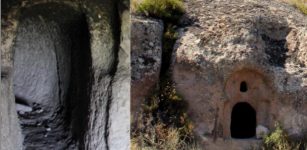 New Entrances To Ancient Underground City In Kayseri, Turkey – Found Accidentally
Archaeology | May 1, 2020
New Entrances To Ancient Underground City In Kayseri, Turkey – Found Accidentally
Archaeology | May 1, 2020 -
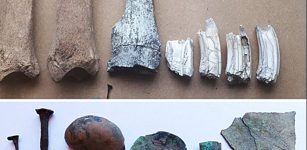 South American Cultures Quickly Adopted Horses – New Study
Archaeology | Dec 26, 2023
South American Cultures Quickly Adopted Horses – New Study
Archaeology | Dec 26, 2023 -
 Giant Meteorite Impacts Created The Continents – Evidence Found
Human Beginnings | Aug 12, 2022
Giant Meteorite Impacts Created The Continents – Evidence Found
Human Beginnings | Aug 12, 2022 -
 Pharaoh Hatshepsut: Skillful And Efficient Female Ruler Who Brought Prosperity To Ancient Egypt
Featured Stories | Mar 22, 2017
Pharaoh Hatshepsut: Skillful And Efficient Female Ruler Who Brought Prosperity To Ancient Egypt
Featured Stories | Mar 22, 2017 -
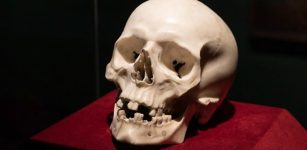 Baroque-Period Marble Skull Analyzed With Standard Forensic Anthropological Techniques
Archaeology | Feb 16, 2022
Baroque-Period Marble Skull Analyzed With Standard Forensic Anthropological Techniques
Archaeology | Feb 16, 2022 -
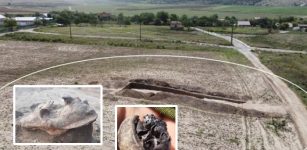 Archaeologists Make An Unusual Find In A 2,000-Year-Old Romanian Burial Mound
Archaeology | Jul 12, 2023
Archaeologists Make An Unusual Find In A 2,000-Year-Old Romanian Burial Mound
Archaeology | Jul 12, 2023 -
 Mysterious Fontainebleau Forest – Home To A Lost Civilization
Civilizations | Jun 23, 2020
Mysterious Fontainebleau Forest – Home To A Lost Civilization
Civilizations | Jun 23, 2020 -
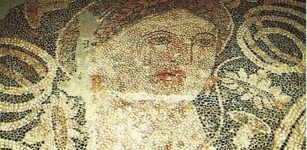 Wax Tablets Reveal Ancient Secrets of The Illyrians
Artifacts | Sep 5, 2015
Wax Tablets Reveal Ancient Secrets of The Illyrians
Artifacts | Sep 5, 2015 -
 Magnificent Meteora And ‘Suspended In The Air’ Greek Monasteries
Featured Stories | May 5, 2021
Magnificent Meteora And ‘Suspended In The Air’ Greek Monasteries
Featured Stories | May 5, 2021 -
 The Inca Empire Was Powerful And Well-Organized – Why Were They So Successful?
Ancient History Facts | Sep 21, 2020
The Inca Empire Was Powerful And Well-Organized – Why Were They So Successful?
Ancient History Facts | Sep 21, 2020 -
 Mirpur Jain Temple: Stunning Artwork Of Ancient Craftsmen Of India
Featured Stories | May 17, 2021
Mirpur Jain Temple: Stunning Artwork Of Ancient Craftsmen Of India
Featured Stories | May 17, 2021 -
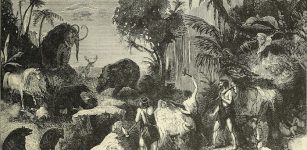 Ancient Human Feeding Behavior Studied By Scientists
Archaeology | Jan 18, 2022
Ancient Human Feeding Behavior Studied By Scientists
Archaeology | Jan 18, 2022 -
 Namoratunga: ‘People Of Stone’ And Ancient Astronomical Observatory
Featured Stories | Jun 12, 2016
Namoratunga: ‘People Of Stone’ And Ancient Astronomical Observatory
Featured Stories | Jun 12, 2016 -
 Vercingetorix: Greatest Of All Gallic Leaders And Hero Of The French People
Featured Stories | Jun 24, 2020
Vercingetorix: Greatest Of All Gallic Leaders And Hero Of The French People
Featured Stories | Jun 24, 2020 -
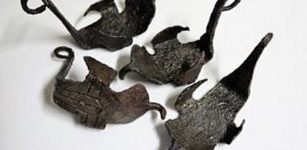 Remarkable ‘Hipposandals’ Found At Vindolanda
Archaeology | Aug 18, 2018
Remarkable ‘Hipposandals’ Found At Vindolanda
Archaeology | Aug 18, 2018 -
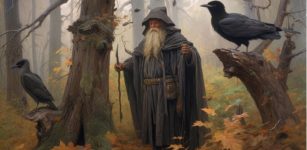 Evidence Ravens Share A 30,000-Year-Old Relationship With Humans
Archaeology | Jul 14, 2023
Evidence Ravens Share A 30,000-Year-Old Relationship With Humans
Archaeology | Jul 14, 2023 -
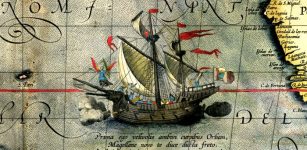 On This Day In History: Ferdinand Magellan Discovers Guam – On Mar 6, 1521
News | Mar 6, 2017
On This Day In History: Ferdinand Magellan Discovers Guam – On Mar 6, 1521
News | Mar 6, 2017

